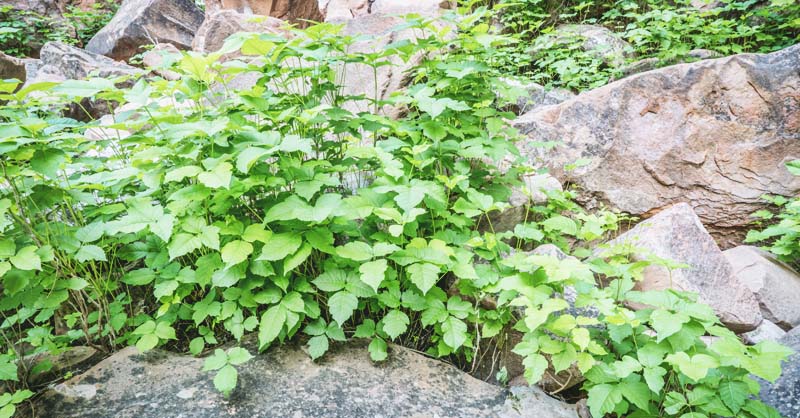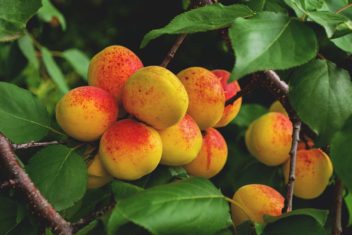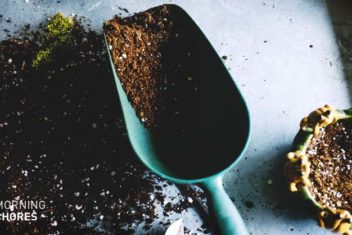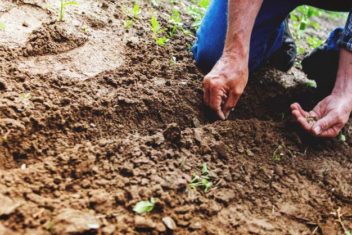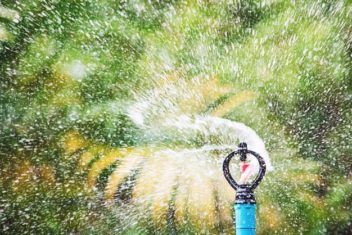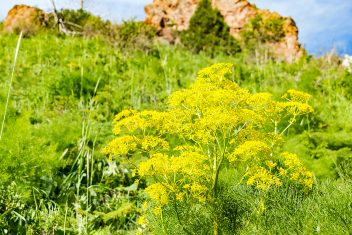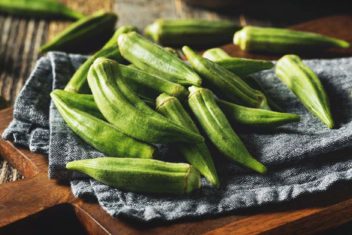You’re walking through an overgrown part of your yard when you notice your arm itches. The next day, you spot a rash and blisters. You have poison ivy – now what? After taking care of the itch, of course, you’ve got to figure out how to kill poison ivy. It’s not easy, but it’s possible if you know the right tricks.
Poison ivy has a reputation as an annoying plant that causes a red, itchy rash wherever it touches your bare skin. Many of us probably remember poison ivy from our youth, with those itchy hands and feet – or worse yet – bottoms!
Poison Ivy is no laughing matter, though. It can be quite serious. I had to take my son to the hospital once because the poison ivy rash was invading his eyes and ears.
A whopping 85% of people are allergic to poison ivy. In fact, some people are so sensitive they can get irritated by it when the oil particles are carried by the wind.
Urushiol is the oily substance that is found in the plant’s leaves. This oil irritates your skin, causing an itchy rash when you come in contact with the plant. You can even spread the poison ivy around your body by touching the rash and then touching another part of your body.
So how do you get rid of this seemingly demon-possessed plant? This article will show you how to kill poison ivy using natural methods – and a few remedies in case you get bit by the plant in the process.
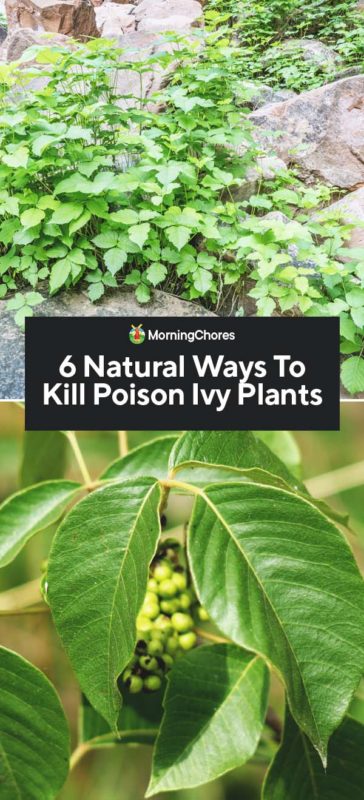
What Does Poison Ivy Look Like?
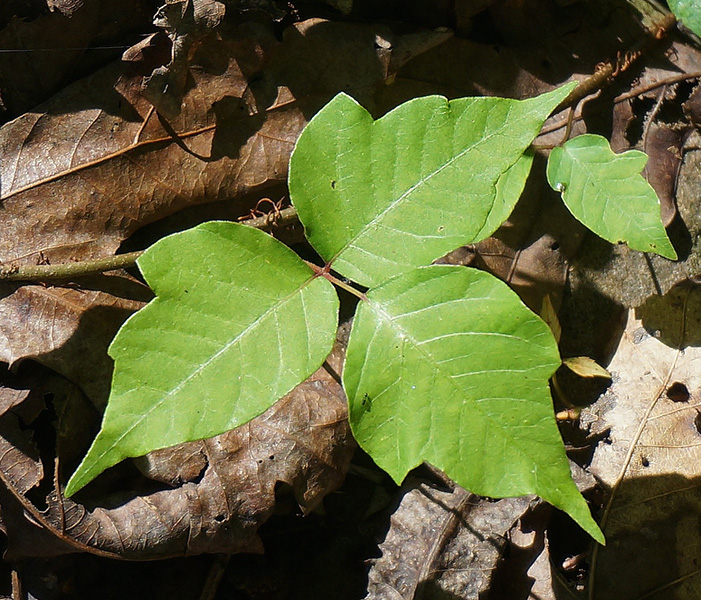
Have you heard the old saying “Leaves of three, let it be”? Poison Ivy has compound leaves, made up of three pointed leaflets. The middle leaf is taller and stands out.
The leaves change color depending on the season. In the spring they emerge as a reddish color. In summer, they are green, and in the fall, they turn yellow or orange. Sometimes the same plant will have different-colored leaves at the same time.
Some poison ivy plants are vines that climb on trees or your house. Others are bush varieties. All of them contain urushiol, the oily resin that covers the leaves. Surprisingly, poison ivy is in the same botanical family as cashews and mangos. That’s why some people get blisters around the mouth after eating mangos.
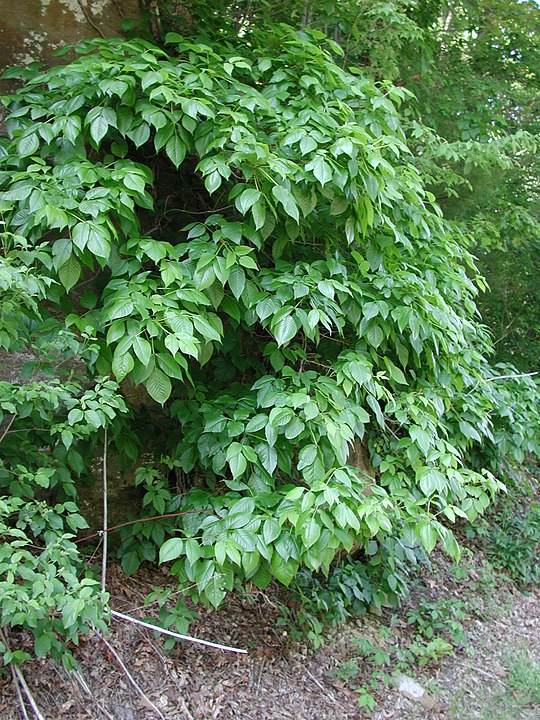
Many plants can be mistaken for poison ivy. Virginia Creeper looks similar but has five leaves. Other look-alikes – raspberries and blackberries – have characteristic stickers, while poison ivy doesn’t. Poison ivy and poison oak look similar and some areas of the country have both.
How to Kill Poison Ivy
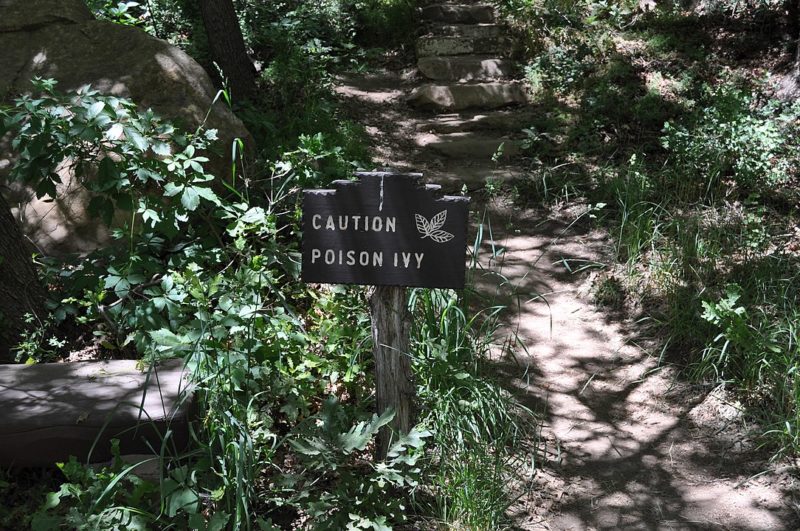
While it can be nasty if you bump into it, there are several recipes and techniques out there that will help you get rid of the poison ivy without having to resort to harsh chemicals.
1. Spray with Salt and Vinegar
Combine:
- One cup of salt
- One gallon of vinegar
Put the salt and vinegar into a pan and heat on low, stirring until the salt dissolves. Let it cool.
Add one tablespoon of liquid dish soap to the mix. The soap helps it stick to the plant.
Put the mix in a spray bottle.
Spray the leaves and stem of the poison ivy plant until droplets fall off leaves. The leaves will take a few days to wither and then the plant will die. Be careful not to spray other garden plants as it will kill them as well.
2. Give Them a Drink On The House
I have never tried this one but it certainly sounds fun. Gin is supposed to kill poison ivy as well as the vinegar and salt mixture in the above recipe.
Mix the following together:
- One ounce of gin
- One ounce apple cider vinegar
- One tablespoon of any shampoo that lathers well
- One quart water.
Spray this mixture when the sun is out.
Let me know if you try it and it works well. We can do a virtual toast!
3. Get a Goat
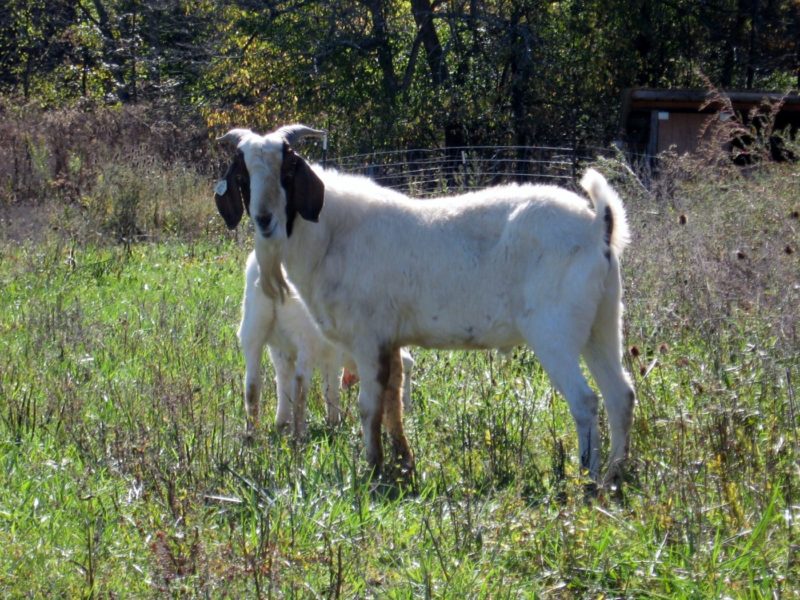
We all know that goats eat everything. Well, not exactly everything, but they will eat poison ivy. Goats can eat the plant without having any ill effects. They also have many other benefits around the homestead.
When I first bought my farm it was just land with no buildings. So deciding where to put the house was the first decision. I din’t want to place it on flat prime garden land, so I decided to put it on a rocky slope near a grove of woods.
The slope was covered in poison ivy. To solve my problem I bought two goats and tethered them to the slope. As my son and I dug footers, the goats happily munched away. (Don’t leave your goats tethered when you are not with them because they could get tangled or cornered by a predator)
One word of caution. Although the poison ivy does not bother the goats they can transmit the oil from their fur to your body. Same goes for your dog or cat.
Incidentally, white-tailed deer will also eat poison ivy, so you may want to encourage them to hang out around your yard.
4. Scald It
Let me preface this by saying that you should NEVER burn poison ivy with fire. Burning the plant will cause it to release toxins into the air that can cause a rash to form on the inside of your lungs and can even kill you. If you want to tackle poison ivy with heat, do it with boiling water.
The boiling water method works best when the plants are near a sidewalk or rock path. If the plants are in an area with lots of soil, it won’t work as well. The idea is to get the boiling water to the roots, which will then shrivel up and be unable to feed the leaves.
The best way to do this is to heat the water in a tea kettle. When the water is at a roaring boil remove the kettle and carry it to the plants. Pour the hot water around the base of the plant. This method often takes several applications but will finish the job.
5. Smother It
This method works well for a small invasion. It takes a bit of time but is easy and cheap. Break down extra cardboard boxes and lay them flat over the poison ivy patch. Cover the boxes to keep them in place.
Kill two birds with one stone and cover the cardboard with composting materials. Pile on manure, straw, and grass clippings. They will all decompose together while destroying the plants underneath, leaving you with a nice new planting area.
Make sure to give this method a full year for best results.
6. When In Doubt, Pull It Out
One way to get rid of poison ivy quickly is to yank the sucker out. This, however, is also the most dangerous way, in terms of getting a rash.
To protect yourself, wear long pants tucked into boots, and a long-sleeved shirt. Make sure you have no skin showing. Wear leather or cotton gloves, not latex, which may soak up the oils. Eye protection is also a good idea.
The best tool for the job is a mattock. Similar to a pickax, a mattock is used for digging and chopping. This is a better choice than a shovel because you can get down under the roots to bring them out of the ground.
Dig down below the roots to make sure you get the entire plant. If you want to cinch the deal, use the vinegar and salt combo to pour in the holes making sure to kill all roots.
Place the plants in a plastic garbage bag to dispose of them. Never put poison ivy in the burn pile. Burning it releases the oils and spreads droplets through the air and can cause your lungs to get infected.
When you are done with the chore, immediately remove all your clothing and place in the washing machine. Wash the clothes with detergent or a special poison ivy soap. Then, take a shower, making sure to wash your hands before you wash other areas of your body.
Is There Anything Good News?
Just to ensure you that I’m being fair, there are some good things about poison ivy. It isn’t entirely evil – it does have an ecological niche.
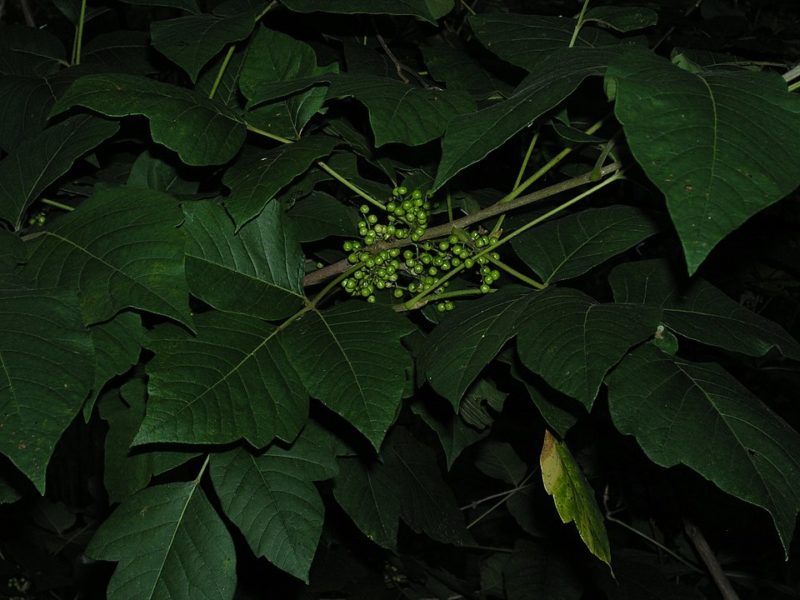
Poison ivy is an important food source for many wild animals. Some animals, such as deer and muskrats, eat the leaves without any allergic reactions.
Poison ivy also makes white berries which are eaten and dispersed by birds. Wild turkeys, woodpeckers, and robins enjoy the late fall berries. Even toads are fond of poison ivy because it makes a nice canopy and safe spot to hide.
Treating Poison Ivy
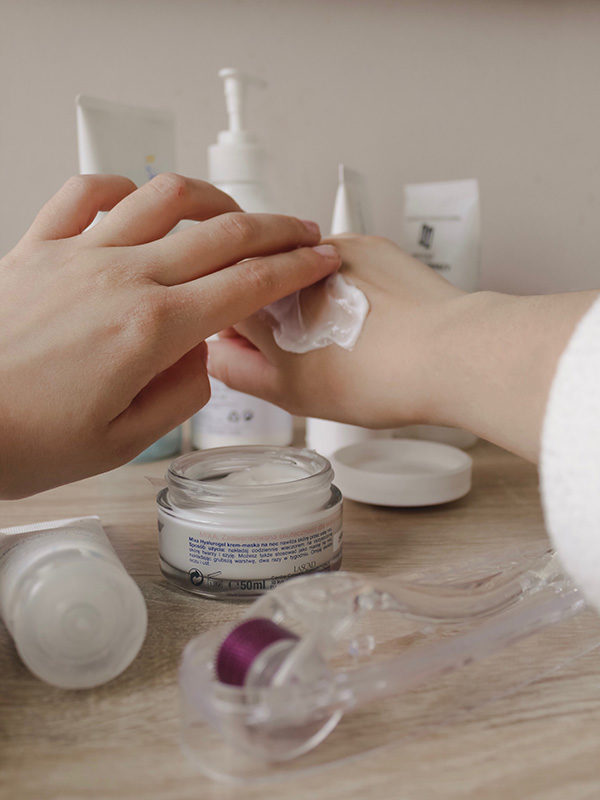
Now you’re up-to-date on how to kill poison ivy. But what happens if you were diligently working to rid your yard or barnyard of poison ivy and you now have a red itchy rash up your arm. What should you do?
The first thing is to wash with warm water and mild soap. Even better is to use an herbal soap with lavender and rosemary in it, since they’re soothing. Follow it up with an anti-histamine cream.
Witch hazel is a fabulous natural remedy that relieves itching and bruising. Plantain and comfrey are also good herbs to use for skin irritations.
Another soothing treatment is baking soda. Mix baking soda with water to make a thick paste. Then spread the paste on the infected skin. Wrap a towel around it because the baking soda tends to flake off.
Aloe vera gel provides a cooling treatment for poison ivy rash. It won’t get rid of the rash any sooner but it will make you feel better. Tea tree oil is another option – it’s a natural anti-inflammatory that helps reduce redness and swelling.
Take Away
Poison ivy is an obnoxious plant, but don’t despair if it pops up in your space. Now you know how to kill poison ivy. Just follow our precautions so that you don’t end up with a nasty rash while trying to battle the beast.
